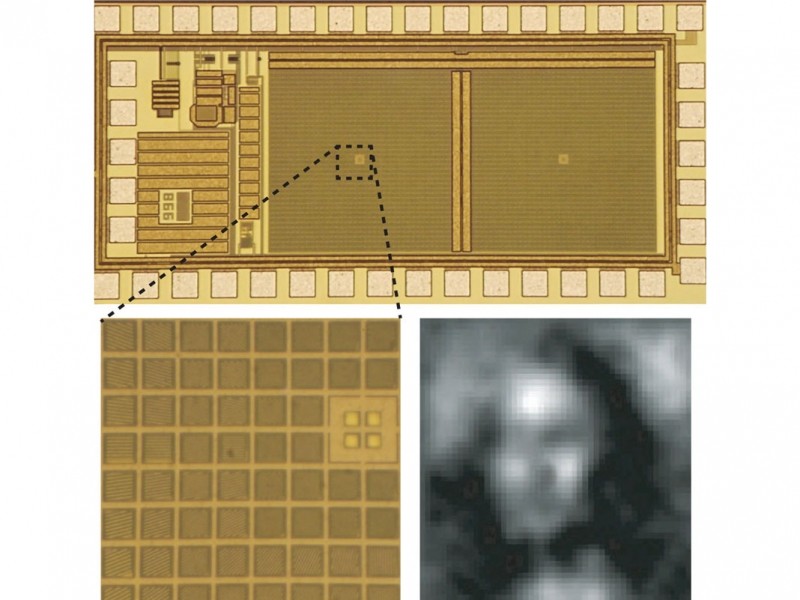The camera modules used in today's smartphones are typically pretty small, as you can see from the image above. However if you look to the left, you'll see something even smaller that's set to be the future of spying.
Researchers at Rambus have developed a miniscule camera with a 200 micron (µm) sensor, which is smaller than the tip of a pencil. It's also completely lens-free, with the tiny sensor mapping out light signals before a processor compiles the data into a viewable image.
This approach to creating a camera is apparently quite new. Traditional cameras use a lens to focus light into the CMOS sensor, however this camera uses a combination of diffraction grating and a spiral-shaped optic pattern to manipulate light before it hits the sensor. The software powering the camera knows the shape of the pattern, and can reconstruct an image from an otherwise useless blob of light.

The highest resolution image achievable through this process is just 128 x 128 pixels (16 kilopixels); a far cry from the 8+ megapixel sensors we're used to seeing in smartphones. However Rambus' camera is still a prototype, and through time it's expected the algorithms and sensor will improve.
The primary aim for developing a camera like this is to reduce the size of gadgets such as smart glasses, where a large camera module isn't practical. It'll also prove extremely useful for spying agencies, which will be able to hide these sorts of cameras everywhere without people being able to see them.